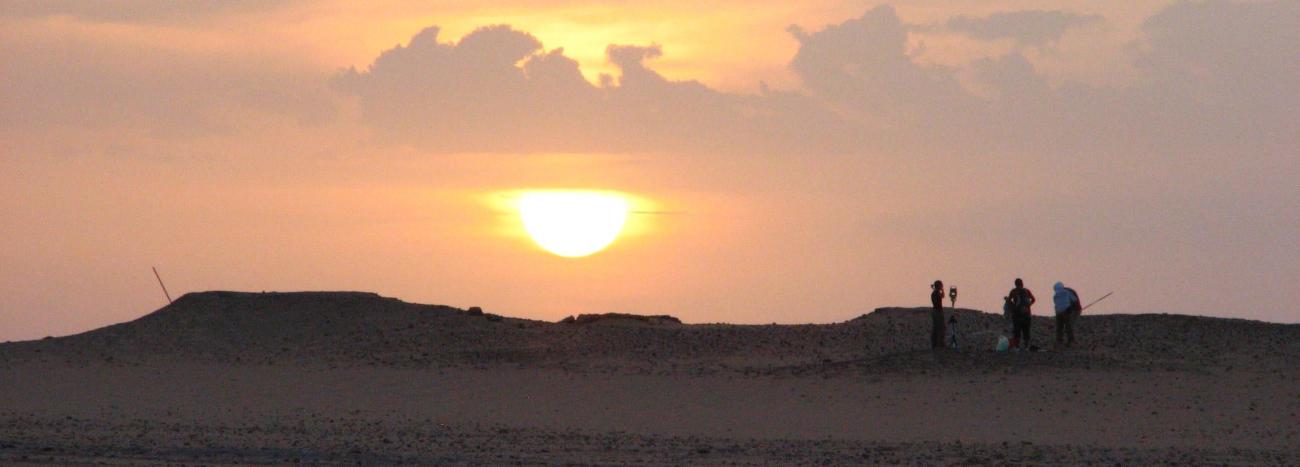
Gobero Archaeology Project
ASU researchers helped excavate a series of endangered cemeteries associated with the earliest inhabitants of the Sahara during what is known as the “Green Sahara Period.” During this time, the Sahara was much wetter than it is today and was home to numerous human communities living around lakes and along rivers that have long since disappeared.
We are interested in using archaeological methods to understand how these people lived and how they adjusted their lifestyles during the long term drying of the Sahara until this region was abandoned after it became too inhospitable for human occupation.
Project Details
This project seeks to reconstruct lifestyle transitions during the African Humid Period. Focusing on a series of cemeteries in Niger, the project uses bioarchaeological methods to reconstruct aspects of diet, health and lifestyle during two time periods: an Early Holocene period associated with more humid conditions and foraging populations, and a Middle Holocene period associated with dryer conditions and the aggregation of more diverse communities at the site of these drying paleolakes. This project will provide new information on how human communities responded to aridification of the Sahara over the course of several thousand years.
Partners: University of Chicago
Research Team
- Christopher Stojanowski, Arizona State University
- Paul Sereno, University of Chicago
Funding
Previous funding by the National Science Foundation (two awards) and the Wenner-Gren Foundation for Anthropological Research
Outcomes
KJ Knudson, C Torres-Rouff, CM Stojanowski. 2015. Investigating human
responses to political and environmental change through paleodiet and paleomobility. American Journal of Physical Anthropology 157:179-201.
SE Burnett, CM Stojanowski, P Mahakkanukrauh. 2015. Six new examples of the bipartite trapezoid bone: Morphology, significant population variation, and an examination of pre-existing criteria to identify bipartition in the carpus. Annals of Anatomy 198:58-65.
CM Stojanowski, CL Carver, KM Miller. 2014. Incisor avulsion, social identity and Saharan population history: New data from the Early Holocene southern Sahara. Journal of Anthropological Archaeology 35:79-91.
CM Stojanowski, KJ Knudson. 2014. Changing patterns of mobility as a response to climatic deterioration and aridification in the Middle Holocene Southern Sahara. American Journal of Physical Anthropology 154:79-93.
CM Stojanowski, KM Johnson. 2011. Labial canine talon cusp from the Early Holocene site of Gobero, central Sahara Desert, Niger. International Journal of Osteoarchaeology 21:391-406.
CM Stojanowski, CL Carver. 2011. Inference of emergent cattle pastoralism in the central Sahara Desert based on localized hypoplasia of the primary canine. International Journal of Paleopathology 1:89-97.
CM Stojanowski, KJ Knudson. 2011. Biogeochemical inference of mobility of Early Holocene fisher-foragers from the southern Sahara Desert. American Journal of Physical Anthropology 146:49-61.
PC Sereno, EAA Garcea, H Jousse, CM Stojanowski, J-F Saliege, A Maga, O Ide, KJ Knudson, AM Mercuri, TW Stafford, TG Kaye, C Giraudi, I Massamba N'siala, E Cocca, HM Moots. 2009. Lakeside cemeteries in the Sahara: 5000 years of Holocene population and environmental change. PLoS ONE 3(8):1-22 e2995.